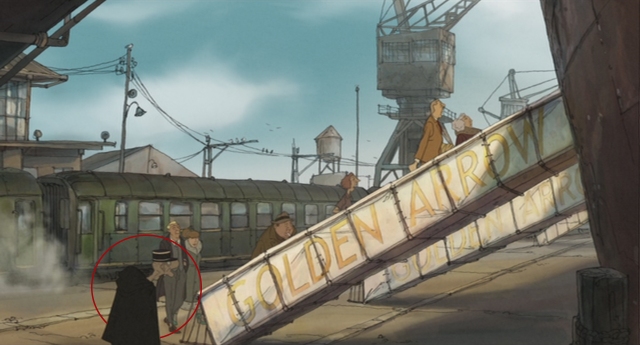Week 4:
This week introduced us to the essay questions. I’m thinking of looking at the French stop motion film ‘Panique au Village’ for the visual storytelling question. Because I’ve never put any subtitles on, I’ve never known what the characters were saying but I never needed to because everything that was happening was explained by what was on screen. I’m not sure about my choice so we’ll see how it goes.
Week 5:
My narrative essay has come to a start this week as I’ve chosen to analyse Sylvian Chomet’s ‘The Old Lady & The Pigeons’. It’s a film without any (meaningful) dialogue so I’m going to be focusing on visual storytelling and narrative structure.
Week 6:
On exploring my chosen film for the narrative project, I decided to look at the shape of the story using Kurt Vonnegut’s graph. I found that it resembled the shape of the old testament’s shape with an incremental rise in good standing before and incident and a terrible low at the end. I thought about why I thought Chomet decided to end the film like this but I’ve yet to back it up with any sources. Next I would like to look into the devices Chomet uses to propel the story without dialogue.
Week 7:
This week I took out ‘The Illusion of Life’ to look into character appeal. Chomet’s characters are an ugly bunch so I thought I should see if Disney could explain why they’re still so appealing.
Week 8:
This week I started to look at Jacques Tati as an influence of Sylvain Chomet’s after I watched ‘The Illusionist’, a film Chomet made based on a screenplay of his. Chomet takes from Tati his sense of humour and the ability to tell a story visually. Tati is a very interesting person I have found, so I’ve taken out a book on him.
Week 9:
This week I finished the essay and send it to Lynsey for a once-over. Apart from a few incorrect references, my only real problem was that I’d written it in a bit of a journalistic manor. I’ll try not to get so excited about what I’m writing about in the future.
Summary:
Researching the world of Sylvain Chomet was quite interesting as I hadn’t known about him prior to writing this essay. I found his work to be very inspiring so for that, this has been a very beneficial experience. I feel having chosen Chomet’s work as a example of visual storytelling, I’ve been given a very good insight into how visual storytelling works as cinema in its purest form.
I feel my essay could have looked at visual storytelling more directly and more in depth. There was so much that we covered in our lectures that related to what I was researching that I couldn’t fit it all in, but I’m confident that the sources that I did use were relevant. I found that I used more physical sources than before taking several books out to support my research. I also found it very hard to arrange all my points coherently and in a way that let the essay flow. I restructured my essay a number of times to ensure that I did eventually find the right order that would let me flow from point to point. I found this to be a difficult experience but I’m sure I’ve done better than last time.







